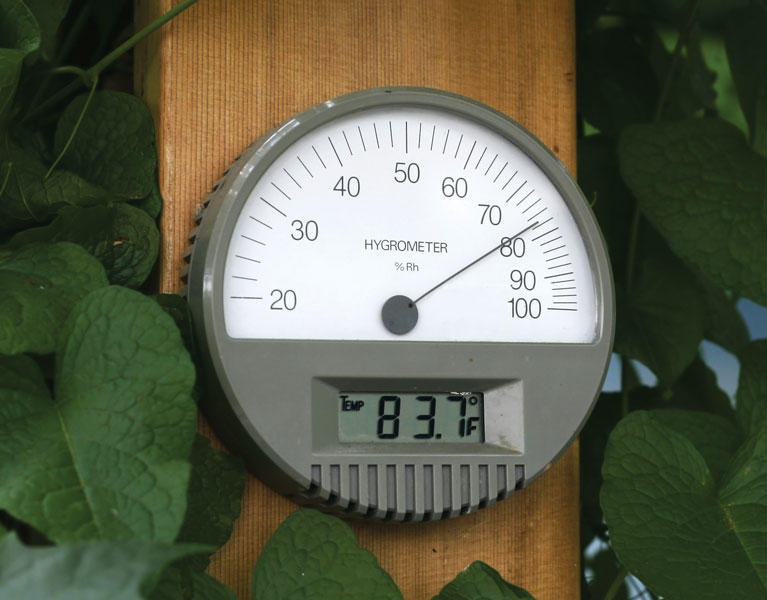The instrument used to measure humidity usually works based on measurements of some other parameters, including temperature, pressure, mass, and a mechanical or electrical change in material as moisture is absorbed.
Hygrometers are instruments that measure the quantity of water vapor in the air, in soil, or in enclosed spaces. These measured quantities can be applied to calculate humidity based on calibration and calculation. Modern electronic devices measure humidity by measuring the dew point (temperature of condensation) or changes in electrical capacitance or resistance. A given air volume can hold a very different amount of water vapor (saturation) depending on the temperature; cold air holds less water per unit volume than heated air. Humidity can be affected by temperature.
Linquip will provide you with all the information and knowledge you need regarding the instrument used to measure humidity. You are more than welcome to contact our experts if you need assistance with using a hygrometer. You may want to start by exploring Linquip’s article “What Is a Hygrometer?” to gain a basic understanding of these instruments.
When was the last time you measured humidity with one of these instruments? Linquip’s wide selection of Hygrometer Products offers you the flexibility to find the right hygrometer to suit your needs. Which type of hygrometer do you need? Is there a specific type you need? Linquip offers no-cost access to all of the available Hygrometer Devices for Sale at Linquip. In addition to that, Linquip also allows you to make online requests for quotes to all Hygrometer Suppliers and Companies so that you can get hygrometer prices from them for free.
Humidity
The amount of water vapor (liquid water turned into invisible gas) in the air is called humidity.
Absolute Humidity
Absolute humidity represents how much water vapor there is in a given volume of air.
Relative Humidity
Relative humidity measurement is the ratio of the amount of moisture in the air to the maximum amount the air can hold, which is dependent upon temperature. For example, hotter air can hold more moisture.
When the temperature is the same but the humidity is higher, we feel warmer, and when the humidity is lower, we feel cooler. This happens because our bodies attempt to cool themselves through perspiration, and when the air holds more moisture, our bodies cannot readily evaporate dampness.
It is important to know the relative humidity indoors as it affects comfort and health, as well as the condition of household possessions. Even though the room may be at a comfortable temperature, people tend to perceive it as hot and stuffy when the indoor humidity is too high (above 55%). The dry air reduces comfort when the humidity declines below 25%.
Monitoring the humidity level provides a way to make sure that humidifiers, dehumidifiers, and air conditioners work normally. Additionally, proper humidity control can reduce energy consumption and improve equipment performance.
It can also change how a certain temperature feels depending on the humidity outdoors. When humidity is high, our bodies have a harder time handling hot weather. Although humidity control outdoors is impossible, knowing the relative humidity at any given temperature can give us an idea of how warm the air will feel. The use of humidity monitoring devices outdoors can also notify you of rain, snow, and reduced visibility.
In the event of 100% relative humidity, the air will become saturated, which means it is unable to hold moisture any longer. A little cooling will result in dew, fog, or mist forming in the air or precipitation from the clouds.

Hygrometers
A hygrometer is a device applied to measure humidity. Hygrometers can be designed for use indoors or outdoors (or both). Here we describe the types of this device.
Analog Hygrometer
An analog hygrometer consists of a coil spring to which a moisture-sensitive material is attached. An easy-to-read circular dial is controlled by the spring. A rugged, weather-resistant analog hygrometer is often included in a device that also features a thermometer.
Analog hygrometers offer the advantages of being inexpensive and easy to use. Together with a thermometer, they provide quick and accurate information about the weather or indoor conditions. There are many different thermometer-hygrometer combinations from which to choose, including sizes, shapes, and finishes. Hygrometers often come with attractive clocks or classic weather stations that display the relative humidity along with environmental conditions. This type of hygrometer typically has the dial marked to indicate what is appropriate and what is problematic in terms of humidity level.
Analog hygrometers are less accurate than digital ones. Their accuracy is generally within 10%. In addition, it can take up to an hour for an accurate reading to appear if sudden changes in humidity occur. Although some analog hygrometers are individually calibrated and typically require no further adjustment, it is important to carefully follow the included instructions if you need to calibrate your analog hygrometer.
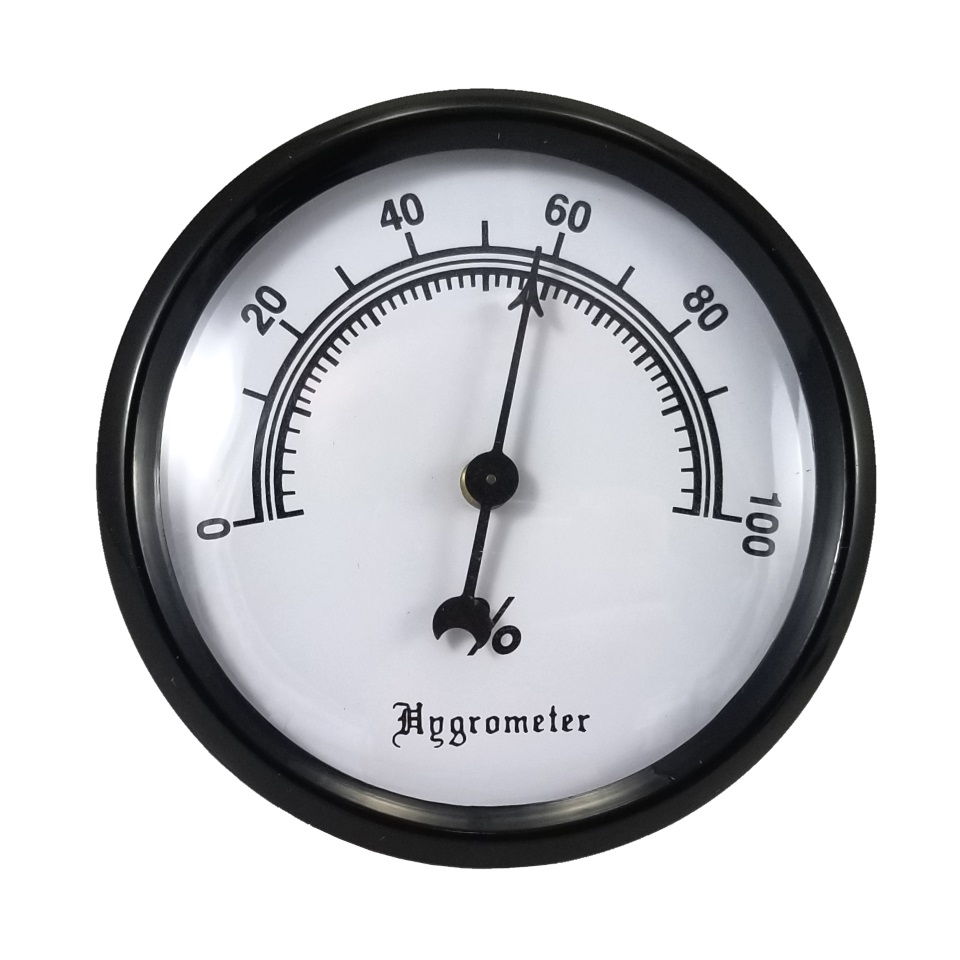
Digital Hygrometers
Humidity is measured by digital hygrometers, which use a sensor to measure an electrical current affected by moisture levels. They are commonly incorporated into multifunctional measuring devices, which range from simple indoor temperature and humidity monitors to indoor/outdoor instruments with multiple features.
With a digital hygrometer, you can monitor high and low humidity measurements as well as historical data. They have a higher degree of accuracy than analog hygrometers, usually within a 5% range. Digital humidity devices don’t need to be recalibrated; some are able to be fine-tuned manually.
A basic digital hygrometer displays temperature and humidity on an LCD, and it may also include information like daily highs and lows, as well as optimal comfort ranges. For easy reference, they can be magnetically attached to a refrigerator or may be placed on a wall or set on a level surface.

Weather Stations with Hygrometers
Indoor and outdoor humidity levels can be measured with digital weather stations, along with other environmental and weather information. Outdoor sensors transmit data wirelessly to an indoor LCD console for display, enabling the measurement of both indoor and outdoor humidity levels. A digital weather station may offer several useful features, such as weather forecasts, an atomic clock, and an indication of the moon phase.
Operational Principles of Hygrometers
Depending on what type of hygrometer is used, its working basis is different. Below we discuss the principles of operation of different types of hygrometers.
Mechanical Hygrometers
Hygrometers based on mechanical principles are built using organic materials (especially finer materials like goldbeater’s skin [ox gut] and human hair) that contract and expand according to humidity. When the hair element in a mechanical hygrometer contracts and expands, the spring moves the needle on the dial.
Electrical Hygrometers
Electric hygrometers measure changes in electrical resistance caused by a change in relative humidity in a thin layer of lithium chloride or in a semiconductor. The other types of hygrometers detect changes in the weight, volume, or transparency of different substances exposed to humidity.
Dew Point Hygrometers
Dew point hygrometers usually include a polished metal mirror cooled at constant pressure and constant vapor content until moisture begins to condense on it. Condensation begins when a metal temperature reaches its dew point.
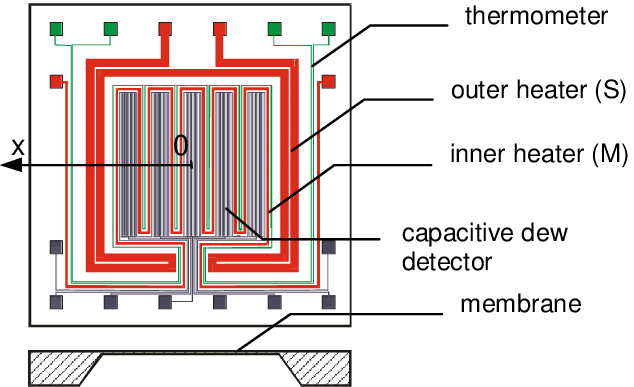
The dew point of the water in this instrument was determined by adding cold water to it until it formed dew; the temperature of the dew point provided a direct measure of humidity. One of the main uses of the condensation hygrometer is to measure the humidity of the upper atmosphere, which cannot be measured by other means because the vapor pressure is too low.
Psychrometer (Wet-and-Dry-Bulb Thermometer)
In a psychrometer, two calibrated thermometers are used, one of which is dry and the other of which is moistened with distilled water on a sock or wick. Wet-bulb thermometers will be at a lower temperature than dry-bulb thermometers at temperatures above the freezing point of water, as evaporation of water reduces the temperature.
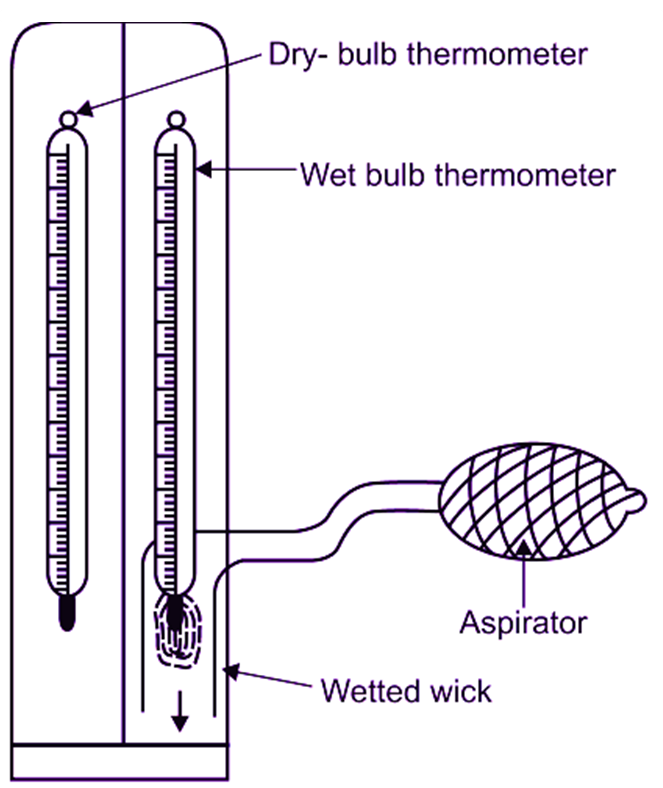
For the wet-bulb to be accurate, however, it needs to be covered with thin layers of ice when the temperature of the air is below freezing. Due to the heat of sublimation, a wet-bulb temperature will eventually be lower than that of a dry one after the continual use of the psychrometer for several minutes.
Relative humidity (RH) can be determined using the ambient temperature, measured by the dry-bulb thermometer, and the temperature difference between the wet- and dry-bulb thermometers. In addition, it is possible to calculate relative humidity by locating the intersection point of the temperature of the wet- and dry- bulbs on a psychrometric chart.
When the air is fully saturated, the dry and wet thermometers coincide. The greater the difference between dry- and wet- bulb temperatures, the drier the air. Psychrometers are frequently used in meteorology, as well as in residential and commercial air conditioning systems, to gauge the best refrigerant charge.
Sling Psychrometer
A sling psychrometer, which applies thermometers connected to a handle, is manually rotated in free air flow until both temperatures stabilize. Although this device is sometimes applied, electronic sensors are preferred for use in field measurements.
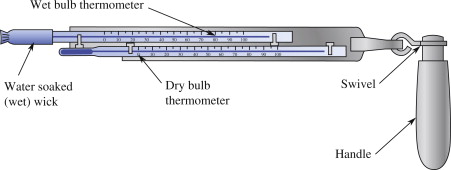
Modern Hygrometers
Hygrometers are used today for a variety of applications with different levels of accuracy.
Capacitive Hygrometer
If space, cost, or fragility are a concern, other types of electronic sensors may be used, although they have lower accuracy.
A capacitive hygrometer measures humidity’s impact on a polymer’s or metal oxide’s dielectric constant. These sensors are accurate to ±2% RH for humidity ranges of 5-95%. Accuracy is reduced by up to three times without calibration. A capacitive sensor can withstand condensation and sudden high temperatures. While capacitive sensors have issues such as contamination, drift, and aging, they can be used in many different applications.
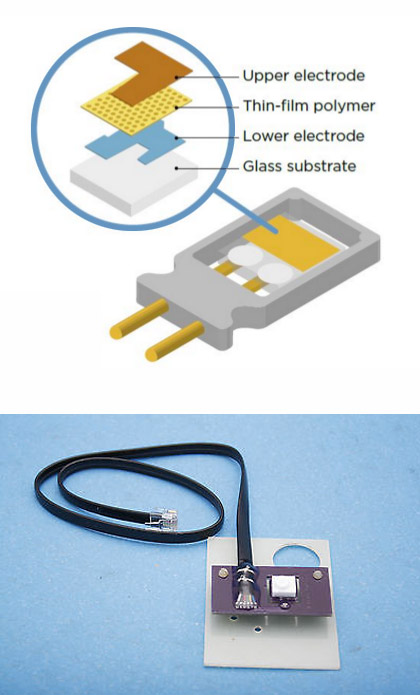
Resistive Hygrometer
With resistive hygrometers, a change in the electrical resistance of a material is measured as a result of humidity. Salts and polymers with conductive properties are typical materials. There is less change in material properties in resistance sensors than capacitive sensors, so their circuitry is more complicated, and they are less sensitive than capacitive sensors.
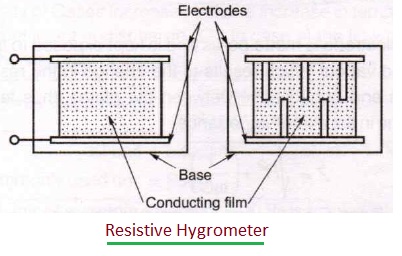
It is necessary to combine the humidity sensor with a temperature sensor in practical terms because the material properties may depend on both humidity and temperature. The accuracy and robustness against condensation vary with the resistive material chosen. A robust sensor with a humidity accuracy of up to 3% exists today.
Thermal Hygrometer
Thermal hygrometers measure the change in air thermal conductivity caused by humidity. Instead of measuring relative humidity, these sensors measure absolute humidity.
Gravimetric Hygrometer
An air sample is weighed against an equal volume of dry air by a gravimetric hygrometer. It is considered to be the most accurate method of determining air moisture content. In general, this device is only used for calibrating less accurate instruments, like Transfer Standards, because it is inconvenient to use.
Optical Hygrometer
An optical hygrometer measures the amount of water in the air by measuring its absorbance of light. Light-emitting devices and light detectors are arranged with an air gap between them. According to the Beer-Lambert law, the attenuation of light detected by the detector indicates the humidity.
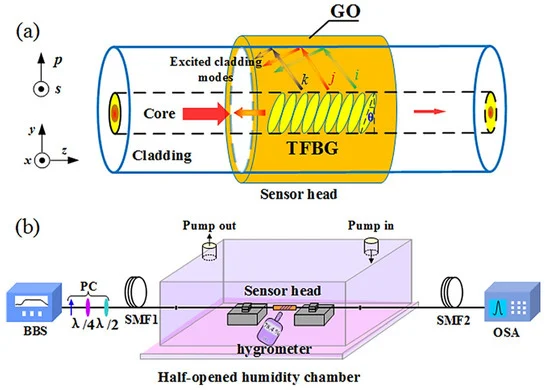
Download Instrument Used to Measure Humidity PDF
We also have provided a PDF version of this document available for you to save. Please use the link provided below to download the PDF version of this document.
Buy Equipment or Ask for a Service
By using Linquip RFQ Service, you can expect to receive quotations from various suppliers across multiple industries and regions.
Click Here to Request a Quotation From Suppliers and Service Providers
Read More In Linquip
- 3 Different Types of Hygrometers and Their Applications
- Top 20 Measuring Instruments Suppliers in 2022
- Solid vs Stranded Wire (A Practical Guide)
- What is a Fuse Wire & How Does It Work?
- Types of Electrical Wire + Application (Complete Guide)
- 3 Common Types of Electrical Connectors (Clear Guide)
- 15 Types of Electrical Power Connectors (Clear Guide) + PDF
- The 8 Best Rust Converters in 2022 (Review Guide)
- 10 Best CNC Machines & Routers for WoodWorking in 2022

